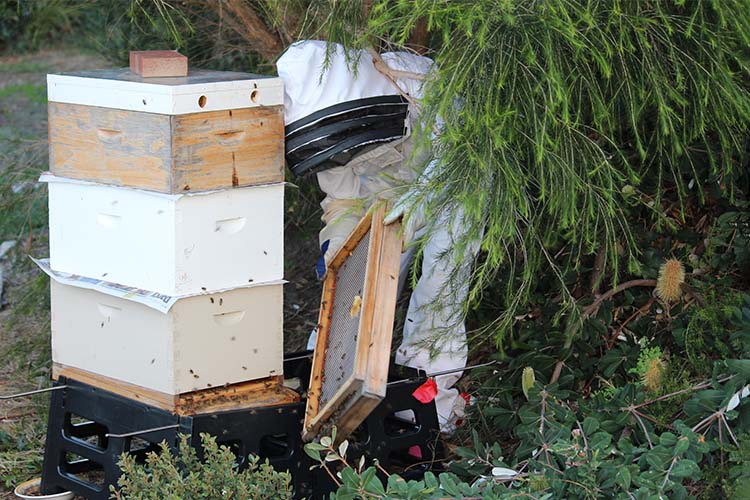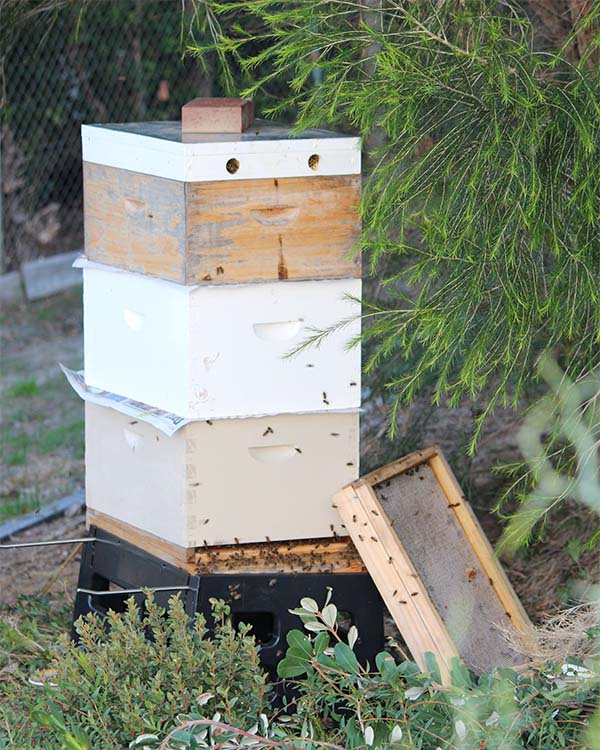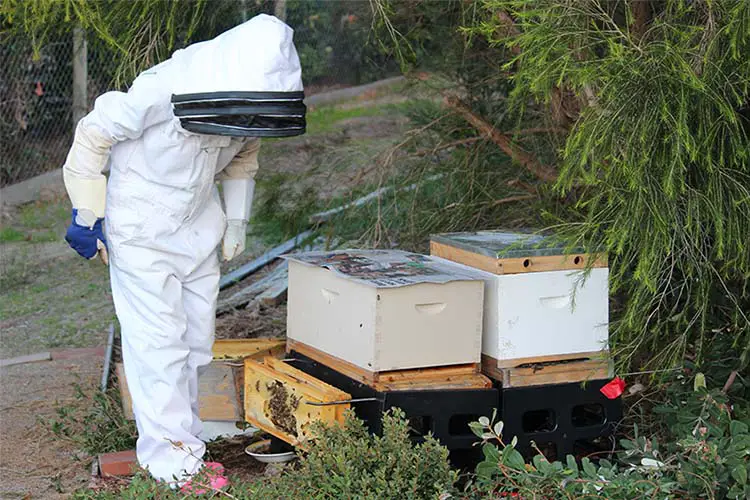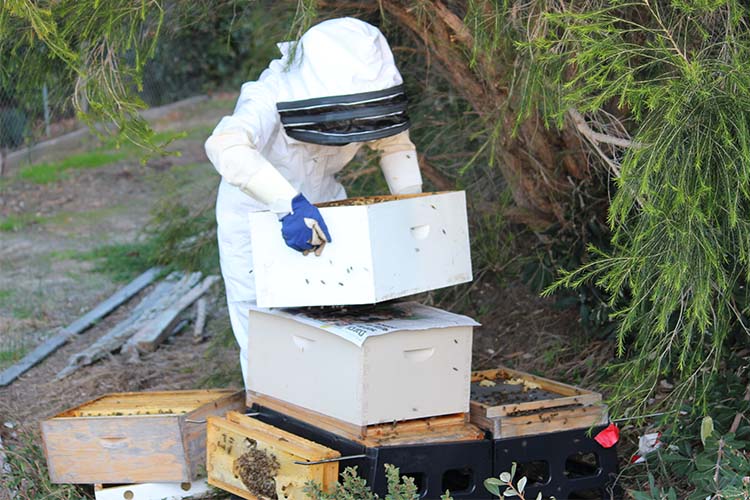As a beekeeper, there are times when you might need to unite two bee colonies together.
Should you have a weak colony, for example, you can unite it with a strong one to ensure its survival. Alternatively, if you have two weak colonies, you can combine them together to create a single, stronger colony.
Your bee colonies will not unite naturally because each has a distinct scent. As such, any bee from another colony will be recognized as an intruder and attacked. Therefore, uniting two bee colonies must be done slowly, giving enough time for the two odors to merge.
Combining Two Bee Hives With Newspaper
I think the best and most straightforward way to combine hives is the newspaper method. For the newspaper method, you should place the weak hive on top of the strong one, with a layer of newspaper in between.
The newspaper method allows the two hives to unite gradually because the pheromones from each one will merge over time through the layer of newspaper. The bees will slowly chew through the newspaper barrier between them. By the time they do, the colonies will be used to each other and unite without fighting.
When To Combine Two Beehives
Hives that are healthy and working well on their don’t need to be combined. However, there are certain situations when combining two hives may be the best way of solving a problem. Here are some of the reasons to combine two hives together:
One Of The Hives Is Weak
Combining two hives can be performed if you have one weak hive and one strong hive. In this instance, you should use the strong one as the base and place the weak one on top.
If the weak hive has a queen, you will need to remove her before uniting them. Don’t leave both queens to fight it out. Although the strong queen will most likely prevail, she may get injured in the confrontation.
One Hive Is Queenless
If the queen dies or has gone missing, you can rescue the hive by requeening. However, sometimes a new queen isn’t available for purchase, especially in the cooler months, so combining two hives becomes a better option.
In this scenario, you can leave the hive with the queen in its location and place the queenless hive on top.
Two Hives Are Weak
If you find yourself in a situation where two of your hives are weak, combining them is a good way to improve the strength of the colonies. This can only be done when at least one hive has a queen.
If both hives have a queen, it’s best to remove one of them before combining. When a new queen becomes available, you can requeen the hive.
Combining two weak hives before Winter is beneficial if the hives have little honey reserves.
Best Time Of Day To Unite Bee Hives
When uniting two beehives together, you should prepare each one during the day when most of the bees are out foraging. This way, you’ll have fewer bees to deal with and less chance of being stung.
Choose a day when the temperature is above 18°C (64°F), and there is little wind. The best time of day to do the actual uniting of the two colonies is late in the afternoon when most of the foraging bees have returned, and the hive is quiet.
The best time of year to unite the two colonies is Autumn, after the honey has been harvested, because it’s easier to join the two colonies together without having to lift the heavy honey supers as well.
If both of the colonies are queenright (that is, both of them have a queen), you will need to decide which queen you are going to keep and destroy the other one.
Uniting Two Bee Colonies: Step By Step
Unite your two bee colonies by taking the following steps:
1. Determine the stronger colony
Identify which of the colonies is the strongest by checking the number of bees in each. Which hive has the most bees? Leave the strongest colony in its location. The weaker one will be placed on top.
2. Smoke and open the weak hive
If the hive is in two boxes and can be consolidated into one, then manipulate the frames so you end up with one box. Do this by finding the best 8 or 10 frames – the frames with the most capped brood, eggs, and honey.
If all the frames in the two boxes are full or nearly full, then leave them intact.
Find the queen if there is one, and remove her before you combine the two hives.
3. Smoke and open the strong hive
Remove the lid from the stronger hive and place one sheet of newspaper on the top of the frames.
If it’s windy, keep the paper in place with drawing pins in the corners.
Put a few holes in the newspaper, first. This will allow some of the scent to pass between the two colonies and speed up the unification process. Then replace the lid of the hive and wait until later in the day.

4. Place the weak hive on top of the strong hive
Later in the day, when most of the bees have returned, you can unite the two colonies.
Remove the lid from the strong colony. The bees won’t be disturbed because there is newspaper acting as a lid.
Carefully place the weaker hive on top of the newspaper, then replace the hive mat (if you are using one) and put the lid back on.
5. Shake any remaining bees in front of the hive
If you have any bees remaining on the base of the weaker hive, you can shake them onto the ground in front of the strong one. They should find their way inside the entrance.
Alternatively, you can shake them directly into the top of the hive (before placing on the lid).

6. Check back on the hive after a few days
Leave the hive alone for a few days to allow the two colonies to combine into one. When you see bits of newspaper being ejected from the front of the hive, you can assume the two colonies have united.
Providing the weather is warm enough, you can inspect the hive and remove the newspaper. When you do, it’s a good idea to rearrange the frames so that all of the brood is together in one area.

Final Thoughts About Uniting Two Bee Colonies
It is helpful to know how to unite two bee colonies, and the newspaper method is really quite straightforward. However, if you are relatively new to beekeeping or would like some advice about uniting two of your colonies, get in touch with your local beekeeping club and talk with an experienced member.
I find it’s best to talk with an experienced local as the advice and help you’ll receive will be specific to your area and situation. They will be willing and able to advise you and may offer to come and help you unite the two colonies if, in fact, it is necessary to do so.



